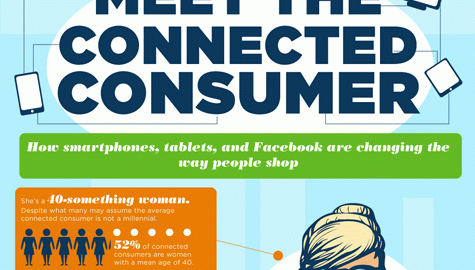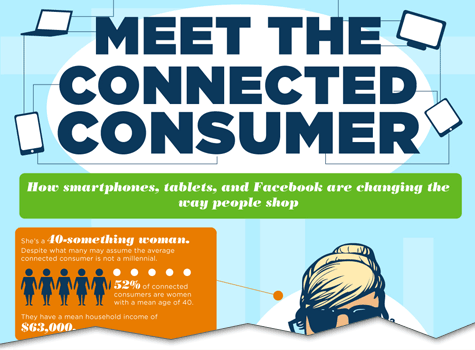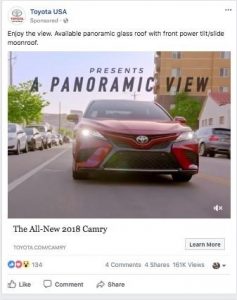Are you still tied to a cord?
More and more folks are cutting the cord — the one connecting them to a cable or satellite box and serving up hundreds of channels they never watch.
Smart media companies, like CBS and HBOGo, are poised to capitalize on Internet media with pay per channel models, while others still use a revenue model based on advertising.
BTW, if you want to see how cutting the cord makes financial sense, here’s a calculator from the Verge to help. Remember, you’ll pay more for Internet access (which you need to make most other cord-cutting solutions work) and phone if you’re still tied to a landline.
Whatever decision you make, the business decision is very different:
Has your market cut the cord?
What happens when your market cuts the cord?
Once your customers cut the cord, they no longer see your advertising.
I heard a prediction (September 29, 2015) on NPR that this might be the last time candidates and TV stations will clean up on presidential debate advertising. In 5 years, when the next presidential debates happen, there might be nobody to watch it on live TV. Instead, we might all cut the cord and watch through a streaming service, like PlayOn.TV.
- What does that mean for advertisers?
- Will TV networks face the same uncertain future as newspapers?
- Even without alternative viewing options, today’s media viewing is so fragmented across many cable channels that the number of eyeballs watching any single program are dwindling. Only a few programs offer something close to the number of viewers advertisers are used to — programs like the Super Bowl and Presidential Debates. Will alternative programming options offer enough eyeballs to warrant massive advertising expenditures?
The time to prepare for massive cord cutting is NOW. If you wait until your market has cut the cord, you’ll be behind market leaders who are learning the ins and outs needed to manage in a digital marketing world where the impact of traditional advertising is limited to a few dinosaurs who didn’t update their media habits.
Digital marketing versus traditional marketing
If you believe digital marketing is just like traditional marketing — only online — you couldn’t be more wrong.
Check out this post from a few years ago where I clearly identify differences between digital media and traditional media.
Not only are tactics different, digital media is a paradigm shift over traditional media.
The differences between digital media and traditional media are too massive for just this one post, but numerous articles address this important issue. Recognize that digital advertising — those annoying banner ads, popups, adwords, and other digital advertising that emulates traditional advertising — is a dying media format. Anyone building a business based on an advertising model is doomed to ultimate failure.
Fundamentally, the differences between digital media and traditional media come down to:
Speaking with consumers rather than talking at them.
Maybe you’re asking yourself why this matters, you’ve been doing just fine with traditional media and it’s likely YEARS before enough folks cut the cord to make any difference in your sales?
Well, I’ll give you 5 good reasons that’ll change your mind:
5 good reasons why you need to develop digital marketing savvy now!
Reason #1: multiple screens
The reality among connected consumers is they’re on multiple screens at the same time.
While they’re watching TV, they’re likely chatting on their phones, surfing the web on their computers, and interacting with their Facebook timeline.
In fact, Brian Solis says it’s increasingly common for viewers to get slight burns on their laps because they’re so engaged with multiple tasks and their laptops get hot without them noticing.
Integrating mobile and social (digital) media with your traditional media means you’re reinforcing your message across platforms — which studies show increases your returns exponentially.
Reason #2: Gain expertise
As I mentioned, digital marketing is very different from traditional media. Without suitable experience, you’ll find yourself and your brand behind your competition when it comes to optimizing your online marketing efforts.
Reason #3: Amplify your message
Social media platforms like Facebook and Pinterest offer opportunities to amplify your message every time a user Repins an image or Likes a post.
Not only do these actions amplify your message by sharing them with the users’ social graph, but act to decommodify the message — or make the message seem more valid. As consumers, we’ve all learned that brands lie or exaggerate about their performance. When consumers share opinions about the brands they use, we believe them because they have no hidden agenda behind their recommendation. This makes consumer shares of your message more believable.
Reason #4: Engage consumers
Consumers like feeling good about the brands they buy and they like feeling they have a connection with the brand.
In today’s world, it’s hard to build that emotional connection with consumers and customers because brands are so far removed from contact with them — except in the case of personal services. Digital marketing provides this personal connection and offers opportunities to engage consumers on an emotional level.
Reason #5: Analytics
Traditional marketing, whatever you may think about its effectiveness, has a huge challenge when it comes to proving its outcomes.
Answering questions like:
- How many sales resulted from a particular ad or advertising campaign?
- Did customers visit a store but decide to buy a competitor’s product?
- How do consumers feel about our brand?
- When is the optimal time to broadcast our advertising message?
- Does message 1 perform better than message 2?
is challenging, to say the least, and may be nearly impossible with traditional advertising.
In contract, showing results from a digital marketing campaign is relatively easy.
- Online sales can be tracked to a particular communication channel and, if crafted properly, to a particular post.
- Abandoned shopping carts suggest consumers who were interested in your brand, but decided against it.
- Comments on social networks suggest exactly how consumers feel about your brand.
- By posting at various times, it’s easy to see when is the optimal time to post.
- A/B testing allows you to easily determine which of 2 (or more) messages perform best.
Concluding comments
For many brands, digital marketing is an afterthought or ignored all together.
While I question the appropriateness of this decision, looking into the future casts even more doubt on avoidance of digital marketing in favor of traditional adverting.
If your target market hasn’t cut the cord yet, they’ll likely take that action in the coming years.
Digital & Social Articles on Business 2 Community(142)








